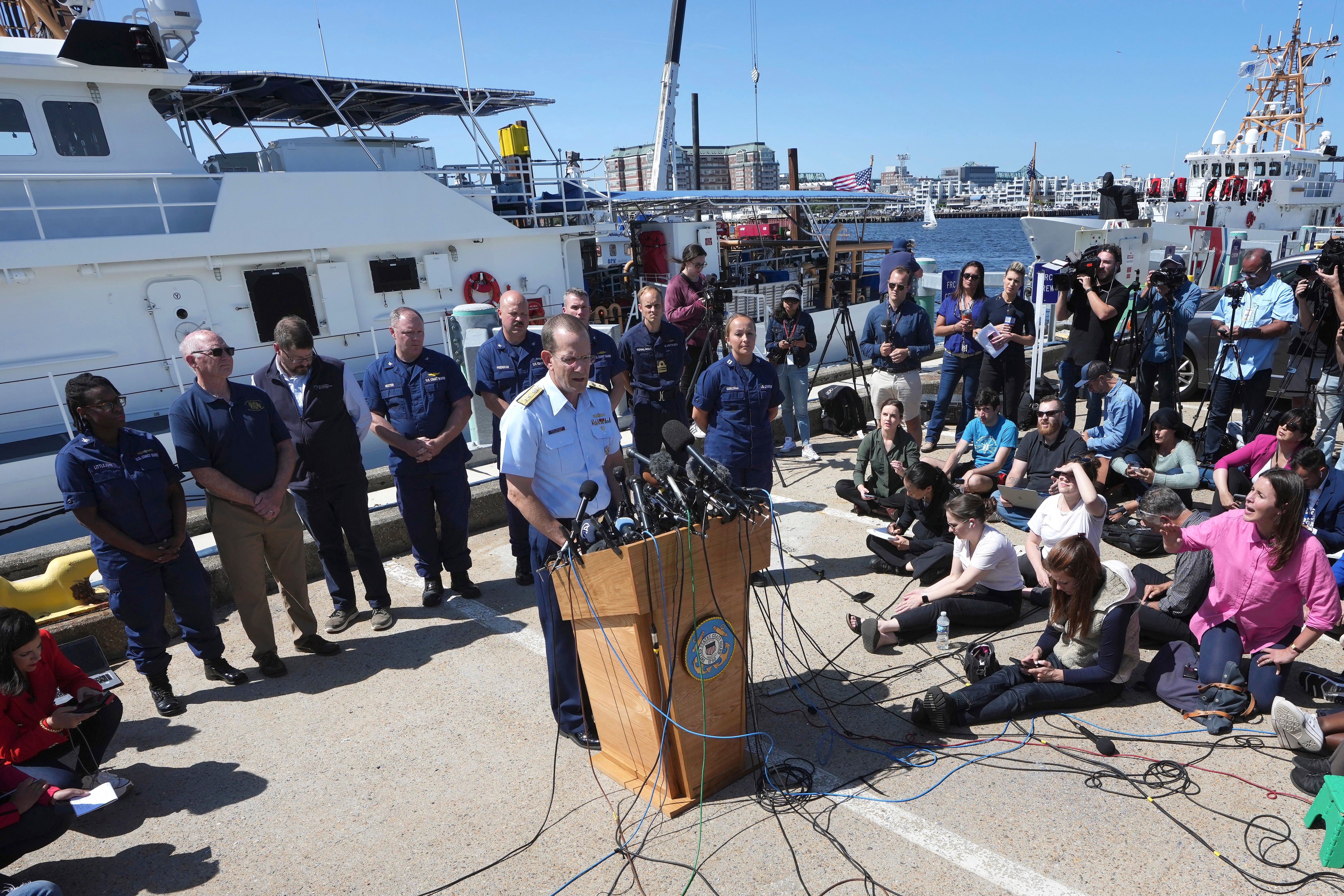Navy doctor reveals Titanic sub victims would have died instantly in ‘catastrophic implosion’
‘You’re alive one millisecond, and the next millisecond you’re dead’
Your support helps us to tell the story
From reproductive rights to climate change to Big Tech, The Independent is on the ground when the story is developing. Whether it's investigating the financials of Elon Musk's pro-Trump PAC or producing our latest documentary, 'The A Word', which shines a light on the American women fighting for reproductive rights, we know how important it is to parse out the facts from the messaging.
At such a critical moment in US history, we need reporters on the ground. Your donation allows us to keep sending journalists to speak to both sides of the story.
The Independent is trusted by Americans across the entire political spectrum. And unlike many other quality news outlets, we choose not to lock Americans out of our reporting and analysis with paywalls. We believe quality journalism should be available to everyone, paid for by those who can afford it.
Your support makes all the difference.A former Navy doctor has revealed what would have happened to the five people on board the missing Titan submersible in its final moments even as officials announced the vessel imploded.
Dale Molé, a former director of the US Navy for undersea medicine and radiation health, said they would have died instantly and painlessly by the force under the depth of the sea.
“It would have been so sudden, that they wouldn’t even have known that there was a problem, or what happened to them,” he told the Daily Mail.
Follow the latest updates on the missing Titanic submarine here.
“It’s like being here one minute, and then the switch is turned off. You’re alive one millisecond, and the next millisecond you’re dead,” he said.
Authorities confirmed on Thursday, that everyone onboard the Titan is presumed dead after the vessel Titanic imploded.
The Titan sub launched on Sunday around 8am EST and was reported overdue that afternoon, about 435 miles south of St John’s, Newfoundland in Canada.
The five people onboard were OceanGate Expeditions founder and CEO Stockton Rush, British billionaire Hamish Harding, renowned French diver Paul-Henri Nargeolet, Pakistani businessman Shahzada Dawood and his 19-year-old son Suleman.
The crew on board the small vessel was safeguarded by a pressure chamber, a sealed pod designed to maintain internal pressure at a significantly higher level than the surrounding ambient pressure. Additionally, the vessel was equipped with a pressurised gas system to regulate the internal pressure and provide a steady supply of breathing gas for the occupants.

Dr Mole said the occupants resided in the chamber pressure hull.
“It sounds as though they had reached the bottom when the pressure vessel imploded, and usually, when it gives way, it gives way all at once,” he explained.
“It sounds like it was the carbon fiber cylinder that gave way and resulted in the implosion.”
Dr Molé said the four passengers and one pilot “would have been ripped to shreds”.
“An implosion is when the wave of pressure is inward, whereas an explosion is when the pressure wave or the shock wave goes out from whatever the source of that is.”

It is not known how the pressure chamber was breached. It is believed that it could have been due to a leak, power failure or fire from an electrical short circuit.
“It’s simply where the debris and fragments and everything else goes inward because of a strong external force. In this case, it was the ocean,” he said.
He said the external pressure would be 6,000 pounds (lbs) per square inch at the depth of the Titanic, which is 12,500ft under the surface.
It is a pressure that would cause the hull to collapse and suddenly creates a shockwave if there were a weakness in the hull, he said.
“An implosion can certainly be every bit of destructive as an explosion.”



Join our commenting forum
Join thought-provoking conversations, follow other Independent readers and see their replies
Comments